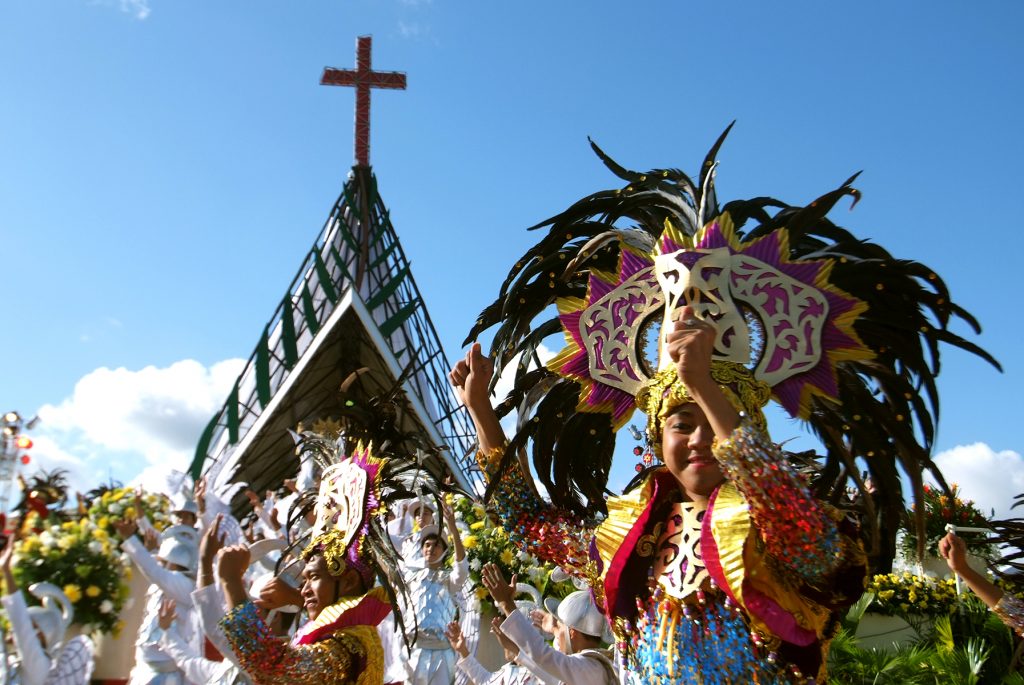
“Without cost you have received; without cost you are to give.” (Mt 10:8b) This was among the instructions that Jesus gave to his apostles, when sent them out on a mission. It is also our inspiration for the year 2021, which we declared as a “Year of Mission,” with the theme “Gifted to Give,” as we prepare to commemorate the 500th Year of the arrival of Christianity in the Philippines.
Pope Francis’ message
This could not have been expressed more beautifully than by the Holy Father himself when he addressed Filipino Catholics in Rome and around the world and said, “On this important anniversary of God’s holy people in the Philippines, I also want to urge you to persevere in the work of evangelization—not proselytism, which is something else. The Christian proclamation that you have received needs constantly to be brought to others…” He also expressed how this could be carried out more concretely by asking us, “to care for those who are hurting and living on the fringes of life.”
Reflecting on John 3:16, the Holy Father asked us to think of mission as oneness with the God revealed to us in Jesus Christ as the one who “so loves” and “gives;” and that the giving always proceeds from the loving. He therefore invites the Philippine Church to be “a Church that loves the world without judging, a Church that gives herself to the world.”
The Holy Father likewise warmed the hearts of our Overseas Filipino Workers (OFWs) when he said, “You received the joy of the Gospel… and this joy is evident in your people… in your eyes, on your faces, in your songs and in your prayers. In the joy with which you bring your faith to other lands.” He also humored us by referring to our OFWs as “smugglers of the faith” because, he said, “wherever they go to work, they sow the faith,” and he regards their “discreet and hardworking presence” as “a testimony of faith…through humble, hidden, courageous and persevering presence.”
For his part, our very own Luis Antonio Cardinal Tagle affirmed the Holy Father’s message when he said, “We thank God for the bearers of the gift these 500 years.” Among them, he cited “the pioneering missionaries, the religious congregations, the clergy, the grandmothers and grandfathers, the mothers and fathers, the teachers, the catechists, the parishes, the schools, the hospitals, the orphanages, the farmers, the laborers, the artists, and the poor whose wealth is Jesus.”
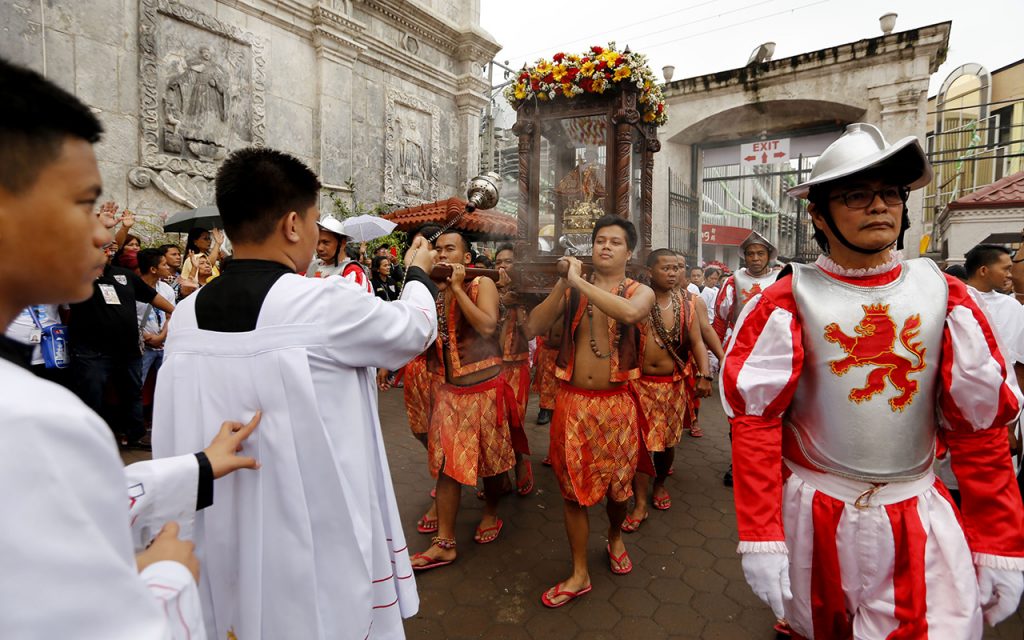
The Bearers of Gift
There has never been, and will never be, a moment in Church history when the bearers of the gift entrusted to us by the Lord will not be both holy and sinful, noble and flawed, at the same time. Such was the case, for instance, with the first Christians who came to our blessed islands in 1521 and encountered our native ancestors for the first time. As in most situations in history, God did not seem to mind sowing the first seeds of the Gospel through flawed human beings like the Portuguese explorer Ferdinand Magellan and the members of his crew in the 1521 expedition from Spain, who were all lay Christians, with the exception of one ordained priest in their company, Fr. Pedro de Valderrama, who was serving as their chaplain.
These men were mostly mercenaries. But they almost instantly turned into missionaries the moment they “discovered” the fertile soil of good will in the natives they had encountered in Samar, Leyte, and Cebu. They had come from distant Spain with a mandate—not to evangelize but to find an alternative route to the Moluccas. They had arrived like hapless strangers in dire need of shelter. They were sea-beaten, weary from the long and perilous journey through the South Pacific ocean, afraid of hostile natives, wary of pirates, hungry, thirsty and sick. Of the five ships that departed from Spain, only three made it; one got ship-wrecked, and one deserted them. They even had to deal with conflicts and mutinies among themselves while at sea.
The Gold they Discovered
If they were in search of gold, these explorers knew they had found it, not underground or in treasure chests, but in the hearts of the nine simple fisherfolks who quickly disarmed their defensiveness with their childlike simplicity and friendliness. They were surprised by these natives who made them feel welcome, gave them food, fish, fruits and coconuts, who allowed them to pitch their tents on the island of Homonhon and later, Limasawa, helped them care for their sick, bury their dead, and worship their God.
They who thought of our ancestors as pagans, as godless people, were surprised to find God in the generous hearts of these natives, who opened their doors and treated these weary travelers with compassion. They also went out of their way to help them procure enough food provisions, to be able to reach the Moluccas and eventually return to Spain. So touched must Magellan have been by the spontaneous gestures of hospitality, friendship, and generosity that he had observed while in the company of these natives, that, from mercenary, he suddenly shifted to acting like a missionary in all his awkward and limited knowledge of the Christian faith.
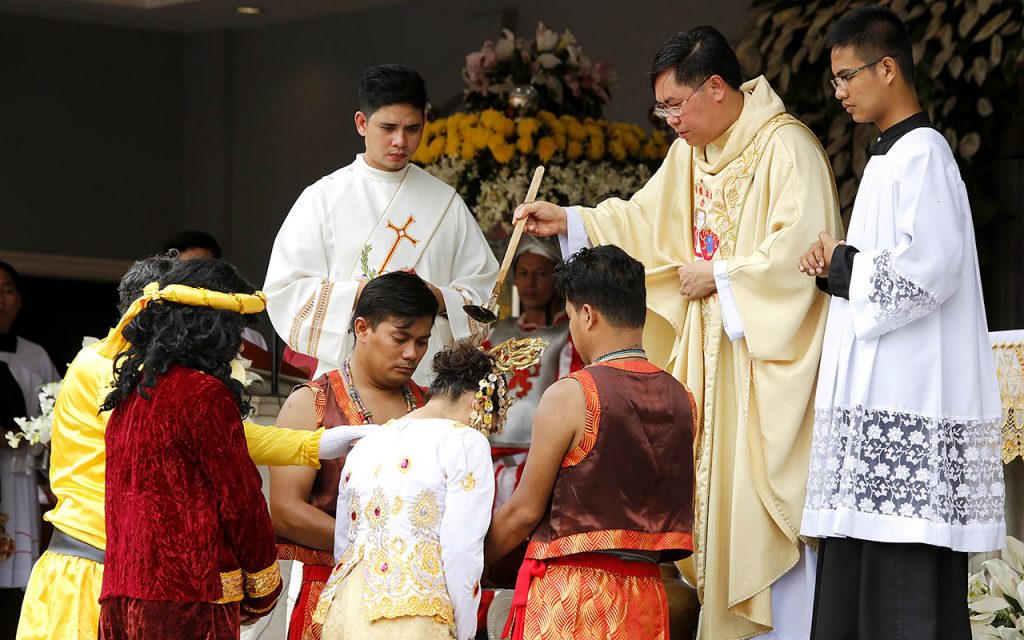
The First Mass and the First Baptisms
Pigafetta, the chronicler, could not contain his own emotions as he narrated how awed he was about the kindness of these gentle souls to them. He described in great detail how they had gone out of their way to build them a platform made of bamboos in Limasawa on which they could celebrate their first Mass on that Easter Sunday, March 31, 1521, and another one in Cebu when they celebrated the first Baptisms on the third Sunday of Easter, April 14, 1521. Magellan did not pressure them to do all of this at gunpoint. They did it in the plain spirit of panunuluyan, pagpapakatao, and pakikipagkapwa-tao, which are the genuine vessels of evangelization.
At the first Mass in Limasawa, Pigafetta describes how the families of Rajah Kolambu and his brother Rajah Siagu even volunteered to join them, how they too knelt at the consecration with them, how they offered them gifts of two slaughtered pigs and assisted them in planting the cross. The icon of the cross which means the whole world to us now, this symbol of God’s eternal love and the price the Son of God is willing to pay for love of humankind, this cross of our redemption, became the first Christian icon ever to be brought to the consciousness of our ancestors.
If Pigafetta had lived in our own times, he would probably be saying these natives put them to shame—they, who claimed to be Christians. They, who thought they were bringing us the Christian faith, must have felt like they had “discovered” it instead in the beautiful hearts of our ancestors, and the baptizing became practically a mere naming of what they had “discovered”—namely, God’s grace already at work in them.
So why should we be surprised about the swiftness in the process that led to the first baptisms in Cebu? The woman named Humamay, the wife of Rajah Humabon, whom they named Juana, was just acting out the childlike faith of these people when she chose the Santo Niño as gift. These natives had accepted them as friends, without malice, like little children who instinctively respond with trust, even to strangers, and express affection to them, no matter what other hidden motives they might have. And, as always, these hidden agenda eventually rear their ugly heads, since they are always Satan’s favorite strategies for “nipping in the bud” the seedlings that have sprouted from the seeds sown by God.
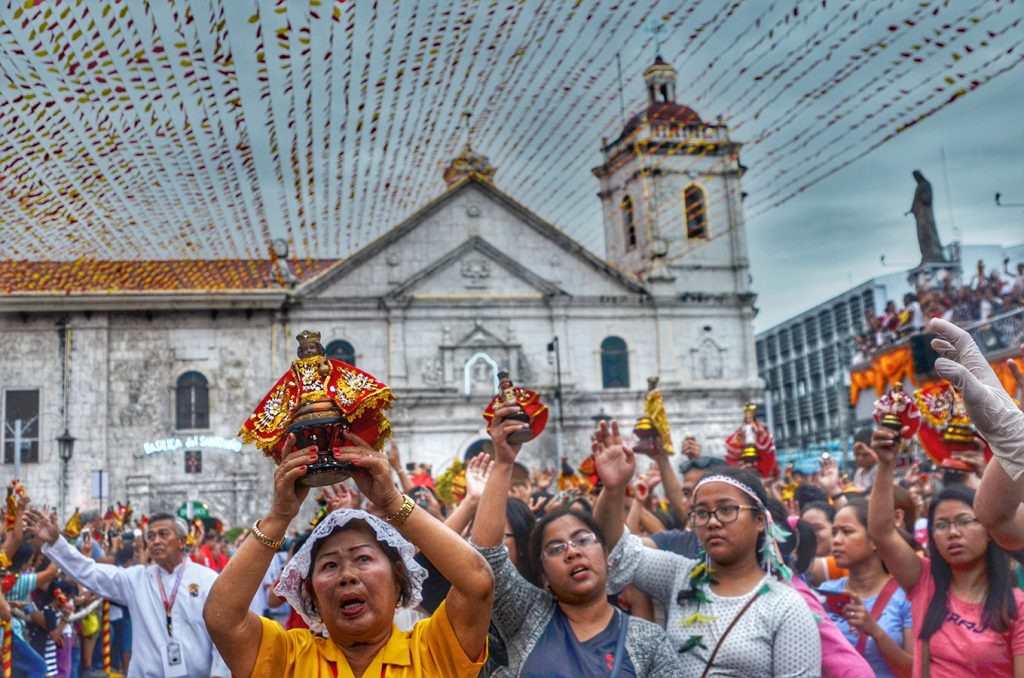
Weeds and Wheat in the Field
As in the parable of the field planted with the good seeds of wheat (Mt 13:24-30), soon, Satan gets busy at sowing the seeds of ill will, hidden agenda, and wrong motives that have always served as a huge challenge in the work of evangelization. But the mystery of it all is that the Great Sower allows both the weeds and the wheat to grow together, and does the sifting only at harvest time.
In those 46 days (March 16 – May 1, 1521) that God got busy sowing the seeds of the Gospel on the soil of friendship and good will between Magellan’s company and the natives and their Chieftains, the devil also got busy sowing the seeds of hidden motives and political agenda that would lead to a whole string of treacherous acts on either side.
Magellan shifts again from being missionary back to being his mercenary self, playing the patron to Humabon and insisting on his port tax-exemption in exchange for an empty promise to fulfill Humabon’s political ambition to reign supreme over his fellow chieftains, including the insubordinate Lapu-lapu of Mactan. Soon Magellan’s hubris brings him to his nemesis, when he gets deceived by the treacherous gift of two goats from the other chieftain of Mactan, Rajah Sula. And his overconfidence leads him to a trap that makes him fall tragically in an ambush on April 27, 1521. Soon, even the Malay slave Enrique, who used to serve as their loyal interpreter, would turn around and become their enemy. He would turn from a facilitator of dialogue to a reinforcer of conflict when the survivors refused to grant him the freedom he claimed he deserved after the death of Magellan, his master.
Treasure in Earthen Vessels
How accurately Paul has expressed it in his second letter to the Corinthians, “We hold this treasure in earthen vessels, so that it may be clear to us that its surpassing power comes from God and not from us.” (2 Cor 4:7) The treasure of the Christian faith came to us through the earthen vessel that was Spain and its own unique brand of Christianity in the 16th century, which was both noble and ignoble, sublime and treacherous, missionary and imperialistic. The bearers of the icon of the Cross of Christ soon also brought with them another cross, the cross of colonial rule, which we eventually repudiated. We found the reason to throw away this cross of oppression precisely because we embraced the true cross of liberty, the cross of redemption, the cross of God’s unconditional love, the cross that gives us human beings our true dignity as sons and daughters of God.
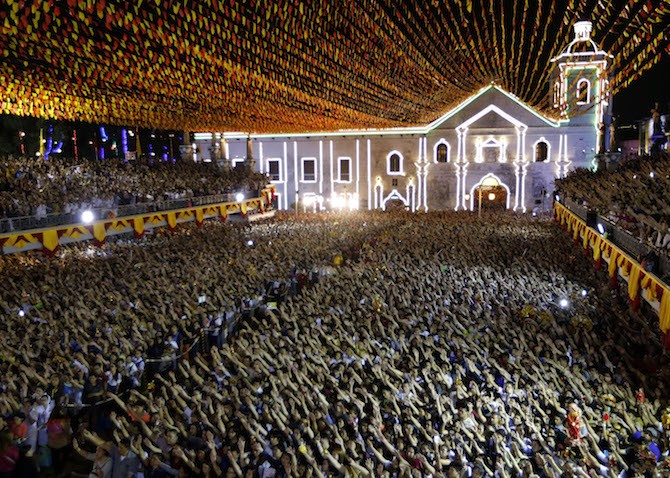
Sifting the Grains from the Chaff
We therefore look back and say to ourselves, despite all the pain that we have had to go through, we will forever be grateful for this cross. After all, we received the Christian faith as a gift, not from Spain, but from God—albeit through these flawed but well-meaning Christians from Spain and Portugal. And since we count it as grace, we also presuppose that God knew well enough to endow our ancestors with the intelligence to accept what was good and reject what was evil in what the Spaniards had brought with them. We must humbly admit though, that, humans as we also are, we have obviously not always succeeded in that endeavor.
It took centuries for our ancestors to be able to discern the mixture of mercenary and missionary spirits in all the human and earthen instruments that served as bearers of the precious gift of the Christian faith. Eventually, they also saw the difference between those who came as true shepherds and those who acted as wolves in sheep’s clothing, those who truly cared for them and those who were cruel and abusive to the flock entrusted to their pastoral care.
Here we are, five centuries later, we continue to learn to sift the grains from the chaff. But the fact that we continued to embrace the Christian faith even after we rejected colonial rule must mean that our ancestors did not equate Christianity with the treacherous economic and political agenda of the colonists. At some point, the faith that we had embraced was no longer alien to us. It had succeeded in taking root on the fertile ground of our innate spirituality as a people, with our own unique gifts and charisms from the one Spirit that we received at baptism.
The Next Five Hundred Years
The true reason why we prepared for 2021 was the Second Plenary Council that happened in 1991, whose 20th anniversary we celebrated in 2011. It was after that celebration that the CBCP decided to launch a nine-year preparation dedicating each year to a particular theme: Year of Faith (Integral Faith Formation) for 2013, Year of the Laity in 2014, Year of the Poor in 2015, Year of the Eucharist and the Family in 2016, Year of the Parish as Communion of Communities in 2017, Year of the Clergy and Consecrated Persons in 2018, Year of the Youth in 2019, Year of Ecumenism, Interreligious Dialogue and Indigenous Peoples in 2020, and Year of Mission in 2021.
We have also resolved in the CBCP to commission a research in partnership with the Research Center of the historic first Catholic University in Asia, the University of Santo Tomas, in order to get us to understand the Present State of Catholic Christianity in the Philippines. We hope to be able to discuss the result of this extensive research work in our next plenary assembly, hoping that it would serve as a good basis for deciding as a Conference, whether or not it is opportune to call for a Third Plenary Council of the Philippines, that would set our missionary agenda as a Local Church in the next 500 years ahead.
We therefore enjoin all our faithful to actively participate in our simultaneous commemoration of the First Mass celebrated in our country on Easter Sunday, April 4, 2021. Let it also be the occasion for the opening of a jubilee door in every cathedral in the whole country, as well as in select Churches during the rest of Easter. As regards the commemoration of the First Baptism, aside from the national celebration on April 14, 2021 in Cebu, we enjoin all the active bishops of the Philippines to also have their own commemorations by celebrating the Sacrament of Baptism, either on April 14 or on the Third Sunday of Easter, April 18, 2021.
Let this year be a year of looking back in history so that we can understand better who we are in the present as communities of disciples, and an opportunity also to look forward in the next 500 years with the same missionary zeal that made it possible for us to receive the Christian faith. What we received without cost is also what we give without cost. Cardinal Tagle expressed this so well when he said “The gift must continue being a gift. If it is kept for oneself, it ceases to be a gift. By God’s mysterious design, the gift of faith we have received is now being shared by the millions of Christian Filipino migrants in the different parts of the world.” It is their zeal that must move us who have stayed in the homeland, to ask ourselves how we are sharing this gift—to repeat the words of the Holy Father, how we are caring “for those who are hurting and living on the fringes of life.”
For the Catholic Bishops’ Conference of the Philippines, on this 23rd day of March 2021,
+ ROMULO G. VALLES, D.D.
Archbishop of Davao
President, CBCP
Source: Licas Philippines
0 Comments